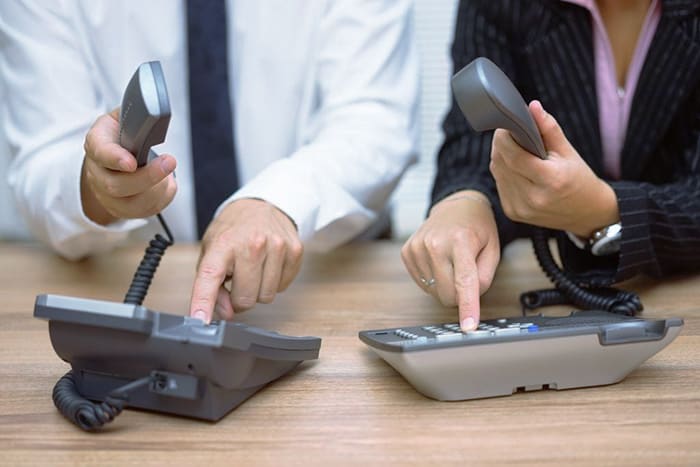Many successful businesses today subscribe to a toll-free number service.
A toll-free number allows callers to reach an individual or business without needing to pay for the call. Businesses will often advertise their toll-free numbers as a free way of calling because the toll-free subscriber pays for the call.
Before the existence of toll-free numbers, the only way to call long-distance for “free” was to place a collect call. Some people still place collect calls from a payphone or a prison phone, but collect calling is now almost extinct.
Manual toll-free systems
Collect calling was the first real means of reverse charging phone calls.
In a collect call, the calling party would place a call to the operator (press ‘0’) and ask the operator to reverse charge the call. Next, the operator would manually dial the other party, provide the caller’s name, and ask if the called party accepted the call and the call’s fee.
It was still impossible to call another country at this time!
Many telephone companies provided this manual version of free calling. However, the process of reverse charging thousands of phone calls was taxing on the phone company’s staff.
InWATS
AT&T rolled out a new service called InWATS as an alternative to operator-assisted collect calling in 1966.
InWATS was primitive, lacking the complex routing features provided by modern toll-free services and with no access to call detail records.
800 numbers were little more than a novelty. Some companies owned toll-free numbers, but AT&T had a monopoly and charged a premium for the service.
Customers were required to sign up for a fixed-rate bulk service that required special trunks. The service was suited to large volume users.
It wasn’t until competitors entered the game that toll-free numbers for business became commonplace.
End of a monopoly
In 1984, a federal judge ordered the monopoly formerly known as “Ma Bell” to split into seven different regional companies called “Baby Bells”.
Competition caused rates to drop, and 1-800 numbers became more affordable than ever.
Most businesses owned 800 numbers. So many numbers were in use that area codes were born.
Modern direct-dial systems
After the transition from a manual switching system to a computerized system in 1966, toll-free calls could be routed based on instructions found in a central database. 800 calls could be directed anywhere.
Vanity numbers came into existence shortly after the dissolution of Ma Bell. Vanity phone numbers allowed users to choose their own phone numbers. Clever vanity numbers were created like 1-800-BUY-BEER.
Then a law was passed that guaranteed number portability in 1994. This law ensured that a company could keep its vanity number or toll-free number when changing providers.
800, 888, 877, 866, 855, 844, 8-X-X?
The demand for toll-free numbers skyrocketed in the 1990s, exceeding the supply of 800 numbers.
To satisfy the market, 888 numbers were created in 1996. 877 and 866 numbers became available in 1998 and 1999. 855 debuted in 2010.
There is such a vast market for toll-free numbers that new toll-free prefixes have been created. Surely, the demand for the six prefixes will one day outpace the supply and a new prefix will be available as a toll-free number.
Toll-free numbers today
While the internet and email have drastically altered business communication, toll-free numbers for business are still very effective. A toll-free number enables a business to project a professional image. In addition, toll-free numbers allow customers to call the business for free.
Collect calling gave way to toll-free services and long-distance communication was altered forever.


